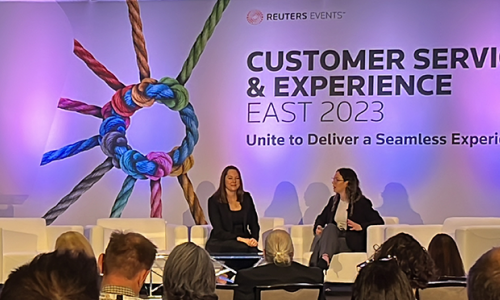How can companies deliver seamless experiences that keep customers coming back, especially as the customer journey grows more multifaceted? A strong Voice of the Customer (VoC) program is key.
When done well, VoC programs reveal what customers truly want and need, how they behave, and what they’re really thinking when they interact with a brand. The insights they aren’t only valuable, they’re actionable – making them vital to CX success.
Savvy companies leverage their VoC program as a cornerstone of their CX strategy, one that informs decision making at various levels throughout the organization. VoC has the potential to provide invaluable information about customers and their experiences, but it’s a challenge to understand, prioritize, and activate that information.
There is no single formula for creating a successful VoC program, but there are certain characteristics that can benefit every VoC program. Here are the core elements of the most successful VoC programs:
1. Include all stakeholders in the planning
A key initial step is identifying a sponsor for the program – who will take primary ownership over it – and determining which cross-functional leaders will need to support it and the apply the learnings.
One way strong VoC programs gather information at the outset is through the use of “listening posts” at various touchpoints; these help give an overall picture of customer opinions and needs. The overarching goal is to monitor the “state of the customer,” but this will look different in each organization.
Before building and executing your VoC program, you’ll need to take a step back to establish the foundational needs and objectives of the program. This will require meeting with stakeholders across the organization to understand common objectives and insert them into the overall goals and change management approach of the program. Consider which stakeholders should be included, whether it be operational support teams, e-commerce teams, managers, or others.
A sound change management strategy is key to this planning stage and will be pivotal to achieving cross-functional buy-in and support for your VoC program. It is essential that key stakeholders — from the CEO down — believe in the importance of this customer listening exercise, so every individual involved is fully committed to supporting the program and is willing to engage in the process.
These proactive planning exercises may be difficult and time-intensive, but they will become the backbone of your VoC program activities and initiatives going forward. If it’s not feasible for your organization to execute these processes on your own, consider partnering with an experienced third-party consultancy firm to help plan and perform these foundational processes, as these preliminary steps are foundational to the all-up success of your VoC program.
2. Craft a roadmap for execution
Now that you have assessed the full needs of each department and built a change management plan to future-proof the success of the program, you are ready to begin researching the current state of your customers’ experiences.
How you begin building this current-state customer understanding will depend on the priorities of the organization and will often require preliminary data mining and Voice of Employee exercises. But the best course of action is to start on a small scale: pick one customer segment or channel to begin building your awareness of the current customer journey. This preliminary customer listening exercise will highlight the biggest, most pressing challenges in your customer journey and help determine which survey type, goals, channels, and audience segments you need to prioritize.
Now you can begin building a roadmap for your VoC program: defining plans and delegating responsibilities, as well as designating timelines and resources for reaching each unique goal and scheduling check-ins to keep everyone on track. Consider working with an expert VoC consultant to build this roadmap for your organization, offload the work and ensure success of the program.
3. Use the right technology
Choosing the best technologies and methodologies to realistically achieve your VoC program goals is the final planning step before you are ready to execute. But this can be easier said than done.
There are many different VoC tools, applications, and third-party integrations available, so it can be challenging to know which options are best for your needs. These can include customer surveys and feedback loops, data visualization and analysis, agent and staff feedback exercises, contact center interaction monitoring, and more.
One useful tool is Gartner’s Magic Quadrant, a series of analyses that assesses VoC providers’ “completeness of vision” and “ability to execute” and ranks them into four quadrants: leaders, challengers, visionaries, and niche players. This tool can quickly educate users about various competing technology providers in the market, as well as their ability to deliver on what users need.
With any of these tools, the key is to come back to the foundational CX goals and priorities you have established and invest in VoC program technologies and strategies that will best support those objectives. Third-party consultation can come in very handy during this phase of the planning process. VoC program experts like Avtex have their finger on the pulse of the technology landscape and are adept at making recommendations aligned to your customer needs, business priorities, and desired organizational outcomes.






